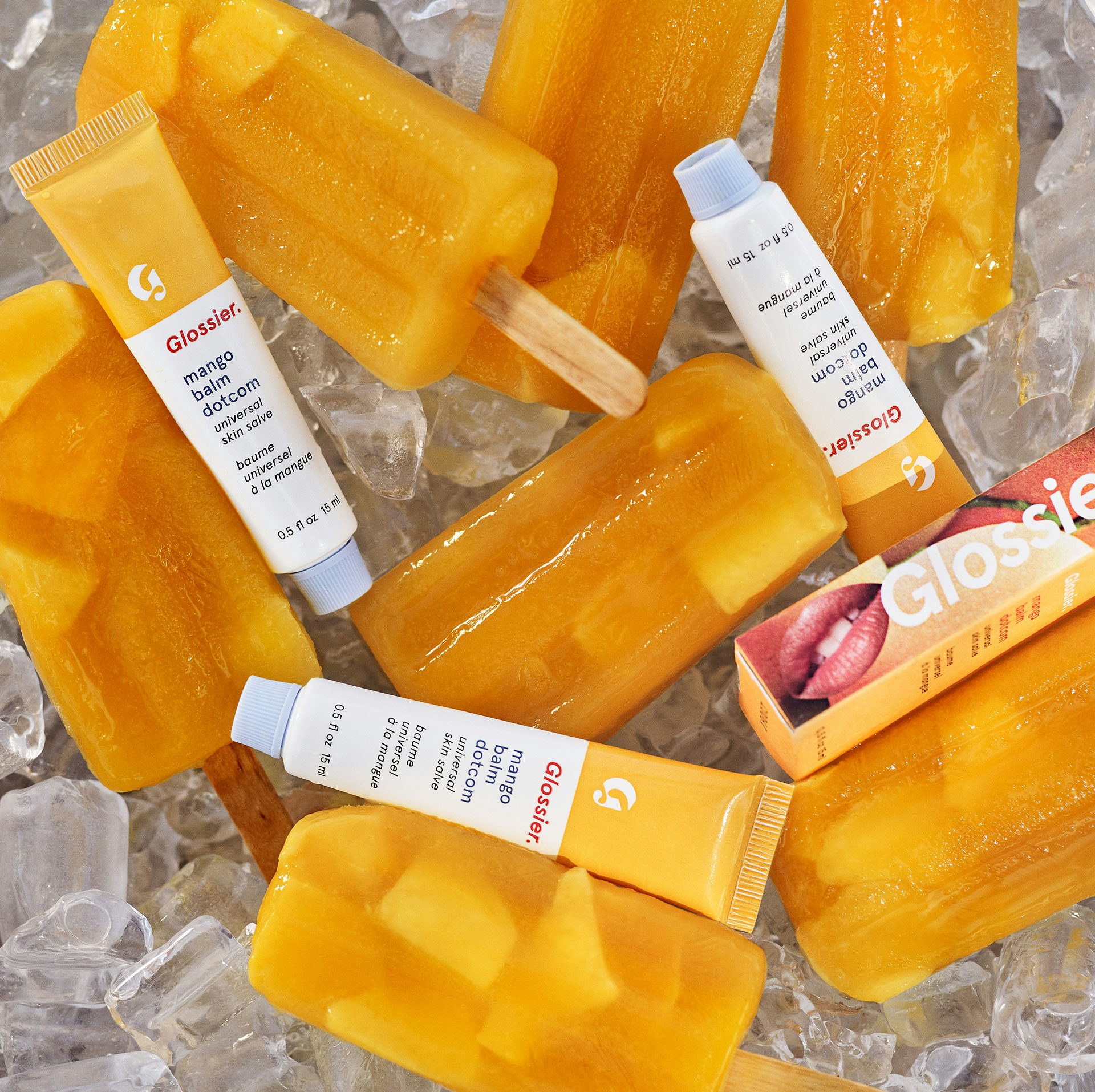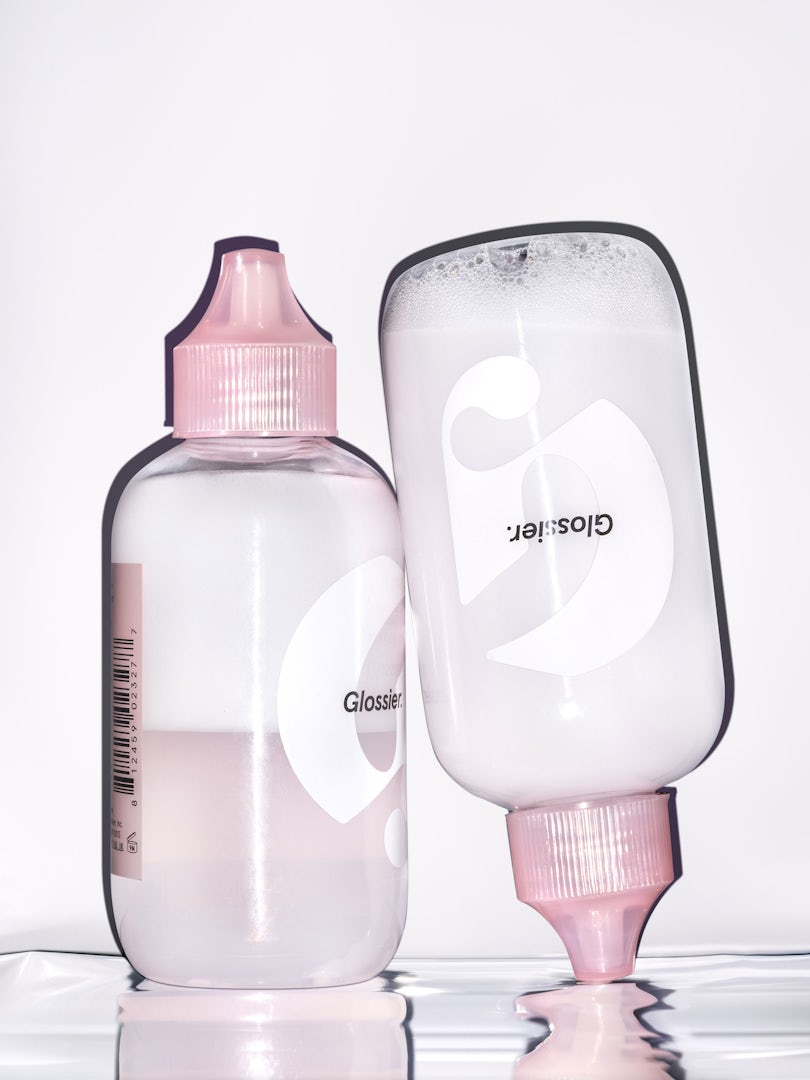How Glossier is shaking up the beauty industry
Glossier is putting traditional beauty retailers to shame with its straight-talking, customer-first approach. As a part of our Annual 2019 coverage, Aimée McLaughlin delves into the rapid rise of millennials’ new favourite beauty brand
Describing itself as a ‘people-powered beauty ecosystem’, makeup and skincare retailer Glossier has gained cult status among notoriously hard-to-pin-down millennials over the last few years. The company was born out of Into The Gloss, a beauty blog started by Emily Weiss in 2010. Weiss, who had previously worked as a Fashion Assistant at Teen Vogue, decided to set up her own website to spotlight the products she thought people needed to know about, explore the routines of famous faces such as Kim Kardashian, and provoke discussion about what beauty means to women today in general.
“When I started Into The Gloss, I wanted to make beauty as much of an element of personal style as fashion,” says Weiss in a statement on Glossier’s website. “As I interviewed hundreds of women, I became more and more aware of how flawed the traditional beauty paradigm is. It has historically been an industry based on experts telling you, the customer, what you should or shouldn’t be using on your face.”
Inspired by the success of other fresh-faced startups such as shaving subscription brand Dollar Shave Club, Weiss and the rest of the team behind Into The Gloss founded Glossier in 2014. The company launched in the US with an initial collection of just four products, including a cleanser, priming moisturiser, lip balm and a misting spray, according to Forbes.
Fast forward to 2019, and Glossier is the latest tech brand to reach ‘unicorn’ status, gaining a whopping billion-dollar plus valuation after its latest round of funding. During Black Friday weekend last year, it reportedly sold one of its ‘Boy Brow’ eyebrow shapers every four seconds, according to the Business of Fashion. Alongside the brand’s army of dedicated millennial customers, it has also gained a host of famous fans including Beyoncé, Karlie Kloss and Sofia Coppola, to name just a few.
[Beauty] has historically been an industry based on experts telling you, the customer, what you should or shouldn’t be using on your face
The secret to the brand’s success? A straight-talking approach to beauty that bypasses the already saturated market and tired approach of most retailers and goes directly to the customer. Now in her mid-30s, it probably doesn’t hurt that Weiss is much closer in age to its millennial customer base than your average CEO. But as the company’s former President and CFO Henry Davis pointed out in an interview with Forbes last year, part of the brand’s popularity has also come from not obsessing over the archetypal millennial consumer. “The main thing Glossier stands for is the power of the individual to choose their own style.… The Glossier customer is a psychographic, someone who understands the role beauty plays in their life,” said Davis.


Almost all of Glossier’s business is done online – still a rarity in a beauty industry where customers typically demand to try before they buy. This means it has had to hone the research phase from the outset to ensure it knows what its customers really want. The brand launched its Milky Jelly Cleanser after noticing that customers rarely included a cleanser in their ‘my top shelfies’ feature, where its followers share what’s in their bathroom cupboard with the rest of the Glossier community, according to Marketing Week. It then asked who would play a cleanser in a film. Emma Stone and Eddie Redmayne – both notable for their pale, milky skin – came out on top, an insight which inspired the formulation and design of the final product.
Unlike the deluge of beauty brands who rely on influencers to get the word out about their products, Glossier is having more success by using its existing hardcore fan base as its preferred marketing tool. For previous product launches it opted against sending the products to influencers, instead gifting them to 500 superfans who were already engaged with the brand. This tactic ensures that it has ample user-generated-content to play with – such as the Looks IRL section on its site, which shows real people sporting the Glossier look (as well as links to buy the relevant products) – and gives the brand instant clout among potential customers.


Every element of the Glossier brand is designed to work well on social, whether it’s the beautiful and minimal packaging design, or the reusable, pink plastic pouch that all of its products arrive in, which doubles as a handy Insta-backdrop. But the company has also started dabbling in physical retail, with permanent stores in both New York and LA now. It is its colourful, city-centric pop-ups in locations such as London, Copenhagen and Toronto that have become its staple, however. The latest of these, in Miami, is a cotton candy pink, Art Deco-inspired ode to the city.
As for what’s next, Weiss is reportedly planning to go beyond brands like Instagram that are dominating social at the moment, and build her own social media-cum-shopping platform for Glossier customers. In a recent interview with Bloomberg News, the founder described this ambitious move, which is still in the early stages of planning, as ‘phase two’ for the rapidly growing beauty brand. Watch this space.






